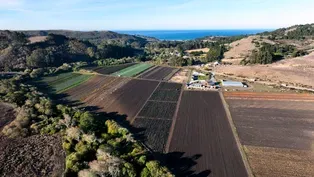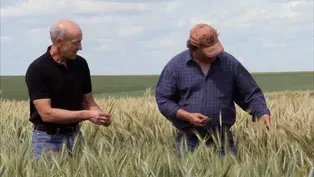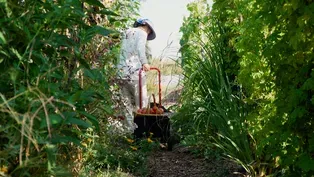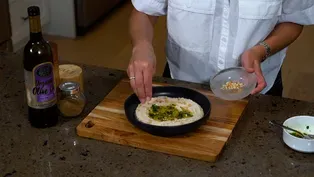
Diversified Farms – Harvesting Health
Clip: 8/16/2024 | 4m 39sVideo has Closed Captions
Our health expert explains why farms that grow a diverse range of crops may be better for our health
Harvesting Healt host Dr. Daphne Miller explains why farms that grow diverse vegetables may be better for your health.
America's Heartland is presented by your local public television station.
Funding for America’s Heartland is provided by US Soy, Sustainable Agriculture Research and Education, Rural Development Partners, and a Specialty Crop Grant from the California Department of Food and Agriculture.

Diversified Farms – Harvesting Health
Clip: 8/16/2024 | 4m 39sVideo has Closed Captions
Harvesting Healt host Dr. Daphne Miller explains why farms that grow diverse vegetables may be better for your health.
How to Watch America's Heartland
America's Heartland is available to stream on pbs.org and the free PBS App, available on iPhone, Apple TV, Android TV, Android smartphones, Amazon Fire TV, Amazon Fire Tablet, Roku, Samsung Smart TV, and Vizio.
Providing Support for PBS.org
Learn Moreabout PBS online sponsorship♪♪♪♪♪ Daphne: So here we are at blue House farms, and when I look over these beautiful fields, I see a crazy quilt much like the ones that my grandmother used to make.
There are so many vegetables being grown in this acreage, and this is what you would call a diversified farming operation.
There are real benefits to having so many different kinds of fruits and vegetables growing together, because they each contribute different kinds of nutrients to the soil and maintain a healthy soil.
You always have roots in the ground and have the soil covered so that it doesn't get washed away or eroded.
And of course, it's lots of different kinds of income from this farm.
When one crop is being harvested, then that can sell and then a couple weeks later you have another crop to sell at market.
So financially, it makes a lot of sense to have all of this diversity on one farm.
But as a family doctor, I was wondering what are the nutrient benefits of eating plants from a diversified farm as compared to maybe a farm that just grows carrots or just grows celery?
And I did some research and found out that growing a variety of plants together is a win for all the different plants, and a win for our health.
So how does eating plants from a farm that produces such diversity improve our health and nutrition?
Plants work together.
The classic example being the Three Sisters, a system of planting invented by indigenous farmers of the Americas.
Corn serves as a trellis for the climbing beans.
The beans, in turn, put vital nutrients such as nitrogen back into the soil, and the big leaves of squash or pumpkin vines act as living mulch.
They hold water and theyre natural weed control.
What about the nutrients of the plants themselves?
This is a hard thing to study, but some studies suggest that plants grown in a diversified system have a higher amount of minerals than ones that are growing as part of a large monoculture.
This is because the richness of the soil.
What is the advantage, to you as a farmer in having such a diversified system here with so many different vegetables growing?
Ryan: Yeah, I treat the farm like a... like I would treat like a big backyard garden that I'd have for my home, or I'd want to go out and I want to pick a bunch of different stuff.
When you grow the same crop over and over again, it uses the same nutrients and macronutrients from the soil, so you're constantly removing those same things over and over again depleting your soil of certain things.
When you... when you rotate your crops, you are pulling different things as the different crops come and go.
And you're also giving more back to the soil.
Um, some crops actually give different things back to the soil.
If you aren't deeply in the soil of the same things over and over again, you're going to have richer soil and a more balanced soil, and a more balanced soil is going to mean a more balanced vegetable that you're pulling out of it.
There's also advantages with pests and disease control.
In that when you are growing different crops, you are breaking pests and disease cycles so that they don't build too much.
Daphne: Diversified farmers like Ryan are trying to maintain diversity in the field, but they're also doing it next to the field.
When I look around here, Ryan is not getting rid of the weeds, and that's for a very good reason.
First of all, that would require a lot of herbicides and pesticides that are not good for our health and that you can't use in organic farming.
But also these weeds serve a wonderful purpose in the wet season.
They draw a lot of moisture away from the crops, preventing rot from occurring and destroying the crops themselves.
Ryan: It also is habitat.
It's habitat for beneficial insects that need a place to overwinter.
So that when we're growing in the... in the growing season, those beneficial insects are already established as a population that can then move into the field and balance stuff out.
Daphne: So today we learned how diversity above ground and below ground is good medicine.
Is good for the soil, it's good for the farmer, and it's good for us.
♪♪♪♪♪
Video has Closed Captions
A farmer builds housing for his workers right on the land. (4m 24s)
Video has Closed Captions
Meet farmers growing wheat in a very dry climate. (4m 35s)
Growing Opportunities for Refugees
Video has Closed Captions
Visit a farm run by the International Rescue Committee that provides refugees a place to grow. (5m 33s)
White Bean Dip – Farm to Fork with Sharon Profis
Video has Closed Captions
Discover how to make a white bean dip appetizer. (4m 1s)
Providing Support for PBS.org
Learn Moreabout PBS online sponsorshipAmerica's Heartland is presented by your local public television station.
Funding for America’s Heartland is provided by US Soy, Sustainable Agriculture Research and Education, Rural Development Partners, and a Specialty Crop Grant from the California Department of Food and Agriculture.















